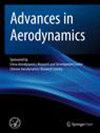On the investigation of shock wave/boundary layer interaction with a high-order scheme based on lattice Boltzmann flux solver
IF 2.3
3区 工程技术
Q2 ENGINEERING, MECHANICAL
引用次数: 0
Abstract
Shock wave/boundary layer interaction (SWBLI) continues to pose a significant challenge in the field of aerospace engineering. This paper aims to address this issue by proposing a novel approach for predicting aerodynamic coefficients and heat transfer in viscous supersonic and hypersonic flows using a high-order flux reconstruction technique. Currently, finite volume methods are extensively employed for the computation of skin aerodynamic coefficients and heat transfer. Nevertheless, these numerical methods exhibit considerable susceptibility to a range of factors, including the inviscid flux function and the computational mesh. The application of high-order flux reconstruction techniques offers promising potential in alleviating these challenges. In contrast to other high-order methods, the flux reconstruction is combined with the lattice Boltzmann flux solver in this study. The current method evaluates the common inviscid flux at the cell interface by locally reconstructing the lattice Boltzmann equation solution from macroscopic flow variables at solution points. Consequently, this framework performs a positivity-preserving, entropy-based adaptive filtering method for shock capturing. The present approach is validated by simulating the double Mach reflection, and then simulating some typical viscous problems. The results demonstrate that the current method accurately predicts aerodynamic coefficients and heat transfer, providing valuable insights into the application of high-order methods for shock wave/boundary layer interaction.基于晶格玻尔兹曼通量求解器的高阶方案对冲击波/边界层相互作用的研究
冲击波/边界层相互作用(SWBLI)仍然是航空航天工程领域的一项重大挑战。本文旨在解决这一问题,提出了一种利用高阶通量重构技术预测粘性超音速和高超声速流动中气动系数和传热的新方法。目前,有限体积法被广泛用于计算表皮气动系数和传热。然而,这些数值方法对包括不粘性通量函数和计算网格在内的一系列因素表现出相当大的敏感性。高阶通量重构技术的应用为缓解这些挑战提供了广阔的前景。与其他高阶方法不同,本研究将通量重构与晶格玻尔兹曼通量求解器相结合。目前的方法是通过在解点上从宏观流动变量局部重构晶格玻尔兹曼方程解来评估细胞界面上的普通无粘性通量。因此,该框架采用了基于熵的正向保留自适应滤波方法来捕捉冲击。通过模拟双马赫反射,然后模拟一些典型的粘性问题,对本方法进行了验证。结果表明,目前的方法能准确预测空气动力系数和热传递,为冲击波/边界层相互作用的高阶方法应用提供了宝贵的见解。
本文章由计算机程序翻译,如有差异,请以英文原文为准。
求助全文
约1分钟内获得全文
求助全文

 求助内容:
求助内容: 应助结果提醒方式:
应助结果提醒方式:


